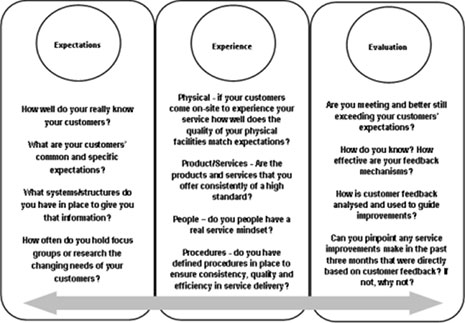Shhh! Be Very Quiet | By Enda Larkin
It’s 6am.
And I’m at the damn airport again. I am more convinced than ever that we humans really weren’t meant to function at this unearthly hour; there isn’t a coffee-brew strong enough to wake the hamster in my head just now. I am literally brain dead, so I’ll apologize for what possibly lies ahead.
And I’m at the damn airport again. I am more convinced than ever that we humans really weren’t meant to function at this unearthly hour; there isn’t a coffee-brew strong enough to wake the hamster in my head just now. I am literally brain dead, so I’ll apologize for what possibly lies ahead.
That said, I just had a most pleasant and friendly check-in which, despite my semi-conscious state, really stood out for me. Nothing extraordinary said or done, just a really polite and friendly girl who I am sure is as tired as everyone else, but certainly didn’t show it. It proved once again – if proof was needed – that good service really can make a difference. Of that there is no doubt. And it got me thinking about service in general – something easy for this article, but a vitally important consideration nonetheless.
And, whilst I was goofing online as I wait here in the lounge, I came across a news story – you might have heard about it too – which explains how Virgin Atlantic are now supposedly providing training for flight crew in its Upper Class Dream Suite on ‘how to whisper’.
Well, there’s probably more to it than that, but the whispering bit is making the headlines. And that’s what caught my eye. My first thought – cynical as I am – was that this was just a good publicity stunt to ‘show’ how customer focused the airline is, and kudos to them if it is because it’s certainly getting a fair bit of attention from what I can see.
Still, to be fair, there seems to be a bit of substance to the initiative too because according to Richard Fitzgerald, the airline’s customer service training supervisor and new whispering coach, “It is incredibly important that all Virgin Atlantic’s cabin crew have their skills honed in order to provide the most comfortable experience possible for our passengers,” Apparently the training will focus on the optimal “tone, volume and sentiment” and cabin crew will learn how to “read” the passenger. Now, let’s give Virgin Atlantic the benefit of the doubt and say that this does show that they are truly focused on the needs and expectations of their customers – or at least that portion of them who spend €6000+ for the pleasure of flying across the pond.
I like that idea. Of being as customer focused as you possibly can be, I mean.
Total Customer Focus.
Yes, that’s something all businesses should strive for, I think.
Total Customer Focus.
Yes, that’s something all businesses should strive for, I think.
Regardless of the type of business you run, you will have customers of some kind; and the more of them the merrier no doubt. You will also know that achieving total customer focus is a big mountain to climb; it’s one of the great challenges of business life. The Holy Grail, if you like. For sure, there are no easy answers here, but I think that seeking to achieve total customer focus in your business requires you to think strategically about issues such as:
Set the example
Obviously you need to show total customer focus yourself in your dealings with customers to serve as an example to others. But I also mean leading by example in a broader context here. You should set the foundation for creating total customer focus within your business when you develop your vision and mission (or whatever you call them) statements. It is in these ‘statements of intent’ that you first publicize your commitments to the customer. Those words should serve as the bedrock for all your subsequent efforts in delivering service excellence; it is a matter of aligning all service-orientated activities against those principles.
Obviously you need to show total customer focus yourself in your dealings with customers to serve as an example to others. But I also mean leading by example in a broader context here. You should set the foundation for creating total customer focus within your business when you develop your vision and mission (or whatever you call them) statements. It is in these ‘statements of intent’ that you first publicize your commitments to the customer. Those words should serve as the bedrock for all your subsequent efforts in delivering service excellence; it is a matter of aligning all service-orientated activities against those principles.
Okay, they are only words: I get that. But they are an important starting point and you shouldn’t underestimate the impact of such statements in serving as guides to your employees and indeed your customers of what you wish to achieve in terms of customer focus. How good are yours at present, in terms of sending out the right message as to what you want to achieve for your customers?
Set Some Goals
In my experience, all service companies promote the idea that they are customer focused, but few really achieve that goal. I am constantly surprised when I ask managers in ‘customer-focused’ companies to give me examples of how they translate their broad aspirations towards the customer into practical action; they are often completely stumped. As I just said, vision and mission statements are useful documents and communication tools but they are meaningless on their own; to add value the sentiments within them which relate to the customer must be translated into goals and from that action taken to realize those goals.
In my experience, all service companies promote the idea that they are customer focused, but few really achieve that goal. I am constantly surprised when I ask managers in ‘customer-focused’ companies to give me examples of how they translate their broad aspirations towards the customer into practical action; they are often completely stumped. As I just said, vision and mission statements are useful documents and communication tools but they are meaningless on their own; to add value the sentiments within them which relate to the customer must be translated into goals and from that action taken to realize those goals.
And what type of customer focused goals can you have?
Well, you probably already have customer-related goals in your business, maybe around increasing satisfaction, growing market share or reducing the number of complaints and so on. But, sometimes, I think we over-complicate things here. Many companies unintentionally cloud the issue when it comes to service goals and they have a range of targets such as reduce customer complaints by 10%, increase satisfaction by 25% and so on – and there is nothing wrong with that. But, the more I think about it, going the simple route shouldn’t be overlooked either. Why not just have one goal in terms of service – 100% Customer Satisfaction, or Zero Defects?
Okay, I know, I’m tired but I assure you that I haven’t lost my mind. For sure, that’s probably an impossible target, but it is a simple one. And certainly you would send out a strong, and clear, message to your employees and customers if you did streamline things in that manner.
Yes, it’s probably not possible to get service right all the time in a people-related business, but that doesn’t stop you trying. Think of it this way. If you were buying a new car and the salesperson informed you that for 90% of the time you’d have no problems with it, but there was a 10% risk it would breakdown at high-speed, you wouldn’t be overly impressed, would you? Probably not, and in fact many car companies now guarantee zero defects – at least for a defined timeframe. Sure, the service industry is a different kettle of fish altogether, but I still think that aiming high is the way to go.
Simplify how you manage the service experience
There are many fancy systems out there for managing service quality and customer relationships, but sometimes amidst all the technology and complex tools, the system takes over employees’ lives (procedures, paperwork, cross-checking etc.) but in the end fails to deliver what it is intended to. If this were not the case, then our average day-to-day service experiences would not be so inconsistent. Sometimes, I think we overcomplicate things here too and rather than focus on complexity in system design, maybe simplicity is the way to go.
There are many fancy systems out there for managing service quality and customer relationships, but sometimes amidst all the technology and complex tools, the system takes over employees’ lives (procedures, paperwork, cross-checking etc.) but in the end fails to deliver what it is intended to. If this were not the case, then our average day-to-day service experiences would not be so inconsistent. Sometimes, I think we overcomplicate things here too and rather than focus on complexity in system design, maybe simplicity is the way to go.
In building a basic framework which can help you to manage all aspects of the service experience I would suggest devising something in line with the customer service journey, which as you know starts with their expectations, then they have the experience of what you offer, and following that, they make an evaluation of that experience based on what their expectations were in the first place.
Now, you probably came across the service journey concept on the first service training course that you ever attended, so it is hardly a new way of looking at things. But, if you really think about it, this framework can actually be a valuable tool to use in order to better structure how you manage customer service within your business. This can be readily achieved by focusing on the following sample questions, and developing appropriate responses based on the answers you find:

This simple model can be a powerful tool in working with your employees to review all aspects of the service experience. Sure, it is only a conceptual framework, but it is user-friendly and does address all aspects that matter at the end of the day when it comes to achieving total customer focus.
Anyway, some food for thought I hope.
Okay, I’d better run now, because they have just called my name: I would like to think that makes me special in some way, but sadly it just means that I am very late for boarding. No doubt, they won’t be whispering at me when I get to the gate.
Enda Larkin has over 25 years’ experience in the hotel industry having held a number of senior management positions in Ireland, UK and the US.
In 1994 he founded HTC Consulting, a Geneva based firm, which specialises in working with enterprises in hospitality and tourism. Since that time, he has led numerous consulting projects for public and private sector clients throughout Europe and the Middle East.
He is author of Ready to Lead? (Pearson/Prentice Hall 2007), How to Run a Great Hotel (How to Books 2009), ‘Quick Win’ Leadership (Oak Tree Press 2010) and the recently published Journeys – Short Stories and Tall Tales for Managers (Oak Tree Press 2012) . He may be contacted via www.htc-consult.com or at info@htc-consult.com Read his Blog at www.htc-consult.com/new/blog
TAGS
richard fitzgerald, coffee brew, publicity stunt, dream suite, virgin atlantic,customer service training, conscious state, cabin crew, flight crew, no doubt, first thought, hamster, kudos, 6am, sentiment, news story, weren, supervisor, airline,proof
CONTACT
Enda LarkinDirector, HTC Consulting
Phone: +41 (0) 22 700 8675
Email: info@htc-consult.com
ORGANIZATION
www.htc-consult.com
Geneva, 1207
Switzerland
Phone: +41 (0) 22 700 8675
Fax: +41 (0) 22 731 3067
Email: info@htc-consult.com
Follow us on:


No comments:
Post a Comment
woutkok@yahoo.com
,
wouter.liekens@cherto.be